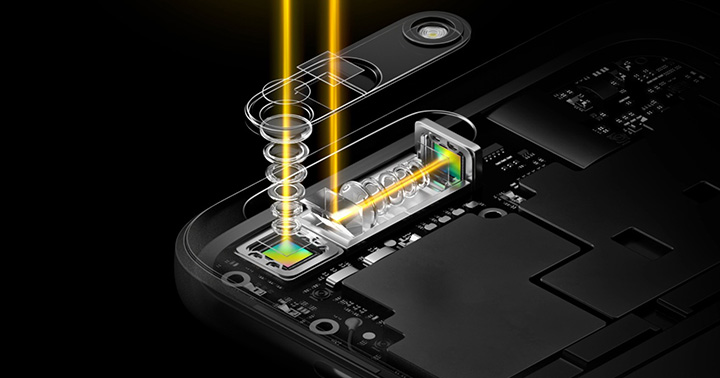OPPO, nowadays, is known for its selfie-centric approach to smartphones thanks to their “Selfie Expert” devices namely the F3 and F3 Plus with dual front cameras. The company’s focus on cameras didn’t start there though as you will see below.
OPPO U701 ULike (2011)

OPPO smartphones are also known for their Beautify feature. The company’s first smartphone to carry that feature is the U701 ULike which was announced in 2011. It packs a 4-inch 480 x 800 display, MediaTek MT6575 CPU, 512MB RAM, 4GB storage, 5MP rear camera, 2MP front camera, and runs on Android 2.3 Gingerbread.
OPPO U705T ULike 2 (2012)

The successor to the ULike was the ULike 2, which the company boasts to carry the industry-first 5MP front camera. Beautify 2.0 also made its debut on this phone. Other features include a 4.5-inch 540 x 960 display, MediaTek MT6517 CPU, 1GB RAM, 16GB storage, 8MP rear camera, and Android 4.0.4 Ice Cream Sandwich.
OPPO N1 (2013)

OPPO made noise in 2013 with the launch of the N1 as it is the world’s first rotating camera smartphone. It sports a 12.7MP shooter with dual-LED flash, mounted in a rotating mechanism so users can use the same camera for taking selfies. Other specs include a 5.9-inch FHD display, Snapdragon 600 CPU, 2GB RAM, and Android Jelly Bean. The mini version, the N1 mini, with Snapdragon 400 CPU was released the following year.
OPPO Find 7 (2014)

OPPO’s Find 7 may sport a fancy rotating camera but it boasts a 13MP Sony IMX214 sensor which can produce 50MP super high-resolution photos by taking ten lower resolution photos then combining them into one. Powered by a Snapdragon 801 CPU, it even supports 4K video recording. Other specs include a 5.5-inch QHD display, 3GB RAM, and 3,000mAh battery with VOOC Flash Charge.
OPPO N3 (2014)

Succeeding the OPPO N1 is the N3, with a smaller 5.5-inch FHD display, a more powerful Snapdragon 801 CPU, 2GB RAM, and Android KitKat. It still uses the same camera concept as the N1 with a rotating mechanism, but with a better 16MP Schneider Kreuznach certified shooter.
OPPO R7 (2015)

The R7 seems like a typical smartphone but it comes with features uncommon to smartphones in its time. For one it was one of the thinnest smartphones measuring at 6.33mm thin and thin side bezels. It packs a Snapdragon 615 CPU, a 13MP ISOCELL camera with PDAF, Laser AF, and a Blue Glass 6P Schneider-Kreuznach lens, and support for VOOC Fast Charging,

OPPO became more serious in the selfie game in 2016 with the launch of the F1 and F1 Plus. Tagged as the company’s Selfie Expert, the F1 sports an 8MP front camera with f/2.0 aperture and 1/4-inch sensor size. It’s big brother, the F1 Plus, packs a better 16MP front camera with f/2.0 aperture and 1/3.1-inch sensor. Both phones feature the Screen Flash and Beautify 3.0.

Also worth noting is the F1s, which is an upgraded F1 but with a 16MP front camera found in the F1 Plus and Beautify 4.0

While other smartphone brands were placing two cameras at the back of their devices, OPPO went the other way and placed two cameras on the front instead. Both phones sport 16MP + 8MP front shooters, the former is the main camera for standard portraits, while the latter sports a wide-angle lens for group shots. In addition, they feature Screen Flash and Beautify 4.0 with Bokeh Effect.
OPPO R11 / R11 Plus (2017)

OPPO did not stay behind in the dual rear camera game when they launched in June the R11 and R11 Plus. The devices are almost identical except for the screen size, RAM, and battery. It has 20MP + 16MP rear shooters and a 20MP front camera for selfies. Powering them is a Snapdragon 660 CPU, up to 6GB RAM, and Android Nougat-based ColorOS 3.1.
Bonus: OPPO 5X Zoom Technology

During this year’s Mobile World Congress in Barcelona, OPPO unveiled their latest camera technology that can provide a smartphone with 5x lossless zoom and “groundbreaking OIS technology”. There’s no word yet though when the said technology will arrive on their smartphones, but you can see it in action in the video below.

YugaTech.com is the largest and longest-running technology site in the Philippines. Originally established in October 2002, the site was transformed into a full-fledged technology platform in 2005.
How to transfer, withdraw money from PayPal to GCash
Prices of Starlink satellite in the Philippines
Install Google GBox to Huawei smartphones
Pag-IBIG MP2 online application
How to check PhilHealth contributions online
How to find your SIM card serial number
Globe, PLDT, Converge, Sky: Unli fiber internet plans compared
10 biggest games in the Google Play Store
LTO periodic medical exam for 10-year licenses
Netflix codes to unlock hidden TV shows, movies
Apple, Asus, Cherry Mobile, Huawei, LG, Nokia, Oppo, Samsung, Sony, Vivo, Xiaomi, Lenovo, Infinix Mobile, Pocophone, Honor, iPhone, OnePlus, Tecno, Realme, HTC, Gionee, Kata, IQ00, Redmi, Razer, CloudFone, Motorola, Panasonic, TCL, Wiko
Best Android smartphones between PHP 20,000 - 25,000
Smartphones under PHP 10,000 in the Philippines
Smartphones under PHP 12K Philippines
Best smartphones for kids under PHP 7,000
Smartphones under PHP 15,000 in the Philippines
Best Android smartphones between PHP 15,000 - 20,000
Smartphones under PHP 20,000 in the Philippines
Most affordable 5G phones in the Philippines under PHP 20K
5G smartphones in the Philippines under PHP 16K
Smartphone pricelist Philippines 2024
Smartphone pricelist Philippines 2023
Smartphone pricelist Philippines 2022
Smartphone pricelist Philippines 2021
Smartphone pricelist Philippines 2020
el gato says:
camera-centric phone? yes…
… AND archaic OS… always uses old android OS.